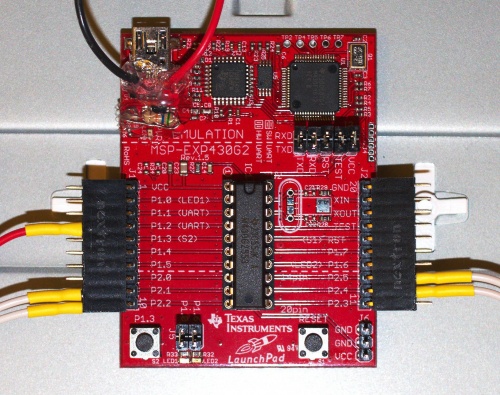SmoothBacklight: a Hardware Mod for Improving Backlight PWM Frequency of Your TV
Ever noticed eye strain or headache after watching your Samsung LED TV? A likely reason for this is an invisible picture flickering. Samsung F-series LED TVs (maybe all previous series too) use pulse width modulation (PWM) to adjust brightness of white backlight LEDs. On TV model UE55F6500 the backlight turns on an off 100 times per second. For F7xxx and F8xxx models the PWM frequency is a bit higher, subjectively around 200Hz. These frequencies are way too low for a comfortable watching. More about PWM-related health issues here.
This page describes an inexpensive do-it-yourself hardware modification that increases backlight PWM frequency to a more comfortable level of 2.3kHz. This method is only suitable for TV models without the Micro Dimming feature.
WARNING: THIS MOD CAN DAMAGE YOUR TV AND EVEN LEAD TO A FIRE IN YOUR HOUSE! USE AT YOUR OWN RISK. AUTHORS AND WEBPAGE ADMINISTRATORS BEAR ABSOLUTELY NO RESPONSIBILITY.
- What you get
- the picture is perceived smoother and with less discomfort. In long term, you get a healthier family. Backlight adjustment works as normal. Future MSP430 code update is possible without TV disassembly.
- What you loose
- 3D is unusable due to a severe crosstalk. All dynamic dimming features must be disabled from the menu because the dimming adjustment lags. You might loose warranty depending on how inaccurate you are. At last, a more frequent switching "wears down" backlight LEDs and driver circuitry faster. Power transistors in LED driver warm up to 45C, which is about 13C warmer than before (however some transistors in power supply warm to 67C both before and after the mod). Hence the warning above.
Modification Procedure
- Required
- one TI MSP-EXP430G2 Launchpad development kit ($10 from TI), one 56k or 470k resistor, some wiring, a Phillips screwdriver, a small-pitch flat-blade screwdriver, a multimeter and a soldering iron.
The modification is explained for TV model UE55F6500. I have no experience with other models, but should be the same principle as long as there's no micro dimming feature.
- The VCC internal voltage generated on MSP-EXP430G2 Launchpad is 3.6V. To lower it to 3.3V replace R8 by 56k (or solder 470k in parallel with the installed R8 resistor). Since the pads for R8 are so small, I poured some epoxy on the re-soldered resistor to avoid accidental tear off. Finally, make sure the VCC voltage does not exceed 3.3V.
- Flash executable code to MSP430. Download compiled code here:
- On Linux
- connect the Launchpad to a USB port, then run:
- apt-get install mspdebug
- sudo mspdebug rf2500 "prog smoothbacklight.out" exit
- Or on Windows
- use TI Code Composer Studio to (modify, recompile and) flash the code.
- Solder wires to the Launchpad pins as shown below.
- TP3: GND
- TP1: +5V
- P1.2: PWM_IN
- P2.1, P2.2, P2.4 and P2.5: PWM_OUT
- Optional: if you have an oscilloscope, test how the thing works: input a 3.3V PWM signal to pin P1.2 (e.g. from the scope's test terminals) and observe output on pins P2.1, P2.2, P2.4 and P2.5.
- Disconnect power from TV.
- Unscrew and remove the back cover. You see two printed circuit boards:
